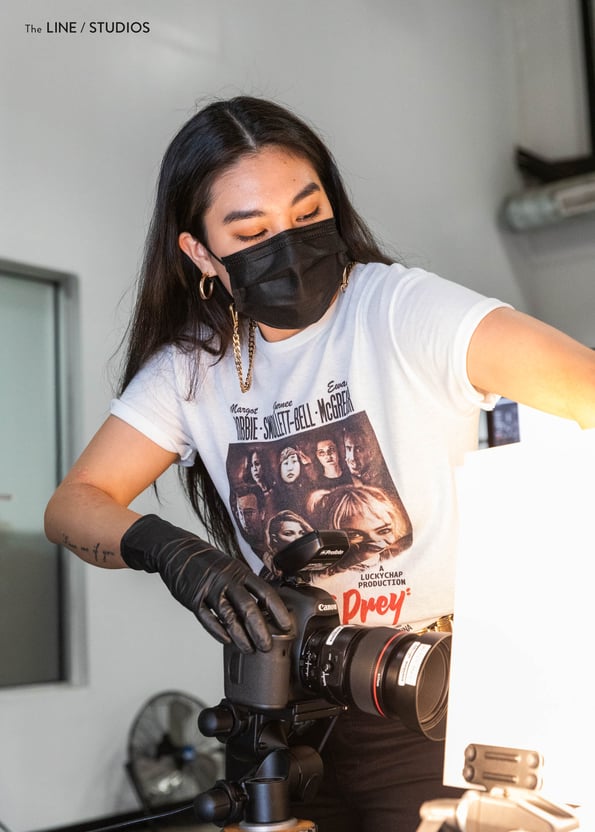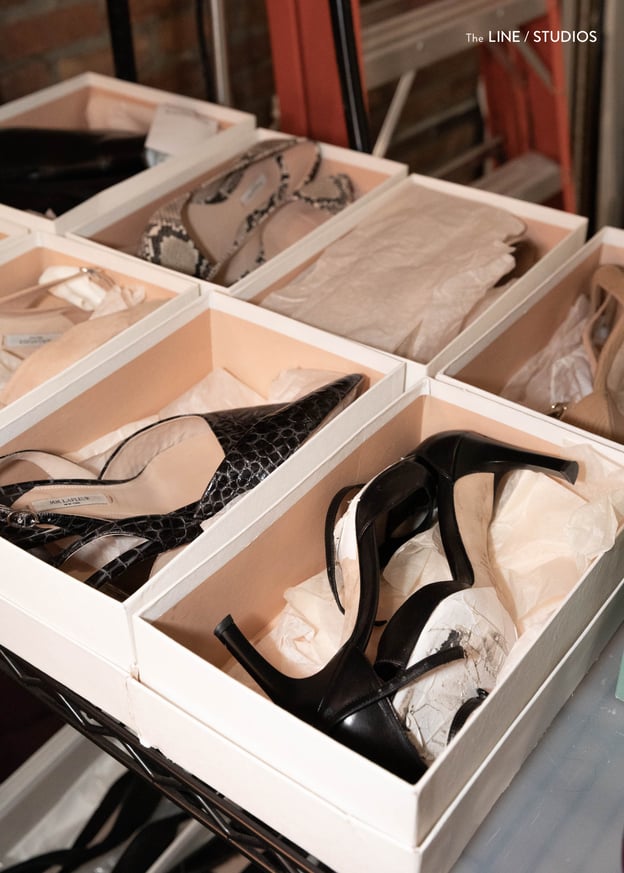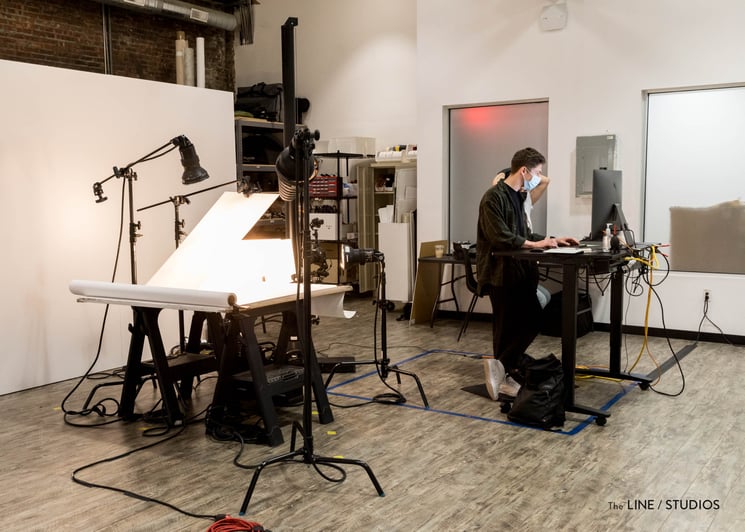Discover 7 Ways Content & Creative Teams Are Changing
For nearly every industry, 2021 is a year of transition-and e-commerce is no exception. It's the 'yes, but' year. We're out of 2020's shutdown but not quite to the projected freedom of 2022. Even when we get there, the normal we'll establish will be something entirely new. As creatives, we're not only navigating that 'yes, but' tension but also depicting it for our audiences.

To predict the shifts of this transitional year, we assembled an all-star cast of industry pros:
- Clair Carter-Ginn, Partner, Forecast Agency
- Amy Strickland, Chief of Staff, Marketing, Sam’s Club
- Maxine Fertig-Cohen, Director of Photo Production, Nuuly
- Terence Mahone, Senior Manager, Digital Production Operations, Farfetch
1. In 2021, It’s ALL Digital-First
In the past, many brands and retailers have sneaked along being digital-transformative, but in 2021, it’ll be all about being digital-first, oriented around making content for online audiences first and foremost.
As Amy Strickland of Sam’s Club points out, the retail warehouse club has operated an eCommerce presence for more than 10 years, yet, with a customer base that prefers in-person browsing, the company’s marketing strategy has been far from digital-first. But the lockdown pushed even the sample-loving Sam’s Club demographic to online shopping and nudged Amy and her team to curate that same tactile experience in a digital-first strategy.
“The communication challenges in the pandemic really wound up being an accidental boon to non-digital-first brands like ours, pushing the transformation to digital-first,” Amy says.
To Terence Mahone of Farfetch, even brands at the other end of the luxury spectrum feel the pull to go digital-first. “Obviously we aren't selling bleach wipes; we're selling $25,000 vintage handbags through boutiques—sort of the opposite side of the equation, but a very similar experience, because the luxury segment has traditionally been an in-person shopping experience,” Terence says. When travel stopped, the loss of shopping tourism cost many Farfetch vendors their in-person channel, and selling through Farfetch became a greater part of their strategy—a shift likely to continue through 2021, as shopping tourism remains hampered for much of the year.
Digital-first sounds nice but, getting practical, what does it look like specifically, in terms of content creation? At Farfetch, it’s led to thinking beyond two-dimensional content and toward virtual try-on experiences for more products, including sneakers—“I find some detail, as a photographer, sort of rubs me the wrong way,” Terence says, “but the customers love that interactivity.” It’s led also to a feature that lets Farfetch shoppers view a garment on one of ten models, seeing the fit on a variety of body types.
The lesson here? When making content in 2021, your campaigns, technologies, and overall focus should be digital-first, making e-commerce king and queen of your marketing in this transition year.
The communication challenges in the pandemic really wound up being an accidental boon to non-digital-first brands like ours, pushing the transformation to digital-first. - Amy Strickland
2. Elevated Creative to Enhance Customer Engagement
Your team can hustle to redefine roles and fill responsibilities as needed to meet the day’s challenges—that’s a positive we learned in 2020. But as we’ve reshuffled, we’ve found there’s no great substitute for elevated creative.
Maxine Fertig-Cohen saw this when Nuuly, which offers a monthly clothing rental subscription, had to choose between sending items for eCommerce shoots to models or its photographers.
“Normally it's a collaboration of model and photographer,” Maxine says. “The model, you know what they look like, but you don't know what you're getting back. So we shifted toward sending products to photographers we knew had people in their life who maybe wouldn't be models we’d cast, but we could know the quality of what would come back. That felt like a better baseline. We know the lighting will be beautiful, the composition will be beautiful.”
This emphasis on inspired and on-brand creative content at Nuuly predates the pandemic and their data-backed approach can offer some guidance for brands currently looking to elevate the quality of their content.
Just before the pandemic, the Nuuly team had found that some of the products offered on their site weren’t performing as well as they wanted. They believed it was because the vendor-supplied creative wasn’t quite on-brand and didn’t resonate as well with their customers. But to know for sure, they decided to run an A/B test.
Half of their site’s visitors were shown products they’d never seen before shot in their vendor’s studio and the other 50% saw products shot in Nuuly’s studio with their particular aesthetic. The results overwhelmingly confirmed their suspicion and so quickly that their analytics team dropped the test in short order. This allowed them to change their budgets so they could shoot 100% of their assortment in their studio.
Maxine summed it up this way, “to be able to make a decision that impacts creative, and continues it at this very elevated level, but with data to support it, meant that we could really boost the way something performed for the business and keep us on track.”
To be able to make a decision that impacts creative...at this very elevated level, but with data to support it, meant that we could really boost the way something performed for the business.
- Maxine Fertig-Cohen
3. Leveraging Untapped Skills for Content Teams
Last year we learned how awesome, persevering, and multi-talented our team members are. Thankfully, there’s no way to unlearn that. So get ready for content teams in 2021 to continue to draw on those special skills we all discovered in our colleagues.
Terence learned about teammates’ special skills after drawing up a Google spreadsheet early in the pandemic. “I put everyone's name on it and said, ‘Everybody, tell me everything you can do. I don't care if you think it's relevant to photography or not,’” Terence says. “People tell me, ‘I'm really good at video games,’ or ‘I'm great at mixing cocktails.’”
Now, these skills are making their way into Farfetch projects. “I talked to one of my photographers the other day. I'm like, ‘Hey, see, that video game skill you said wasn't going to be relevant actually came around,’” Terence says.
So to that fashion stylist who’s a talented food stylist too, and to that lighting assistant who speaks three languages, we see you. We now know one another better than ever, and feel comfortable mixing and matching our skills and backgrounds to push creative boundaries.

4. 2021 Content Creation Is Even More Process-Oriented
If any brands got through 2020 without a pause or workaround in their content production, we’d love to meet them. Because at least the honest among us can admit how upended we felt last year. Now in 2021, look for leaders who emphasize process improvement to continue to implement workflows that are durable against modern challenges.
“There's not a photographic process in the studio we're not going to touch,” Terence says. “We're going to touch every process in terms of photography, and in terms of logistics in the studio.”
For Amy at Sam’s Club, it’s about restoring order without ignoring positive change. “We lost a bit of that internal discipline,” Amy says. “So we’re looking to reinstate some of that,” though adding that it won’t be merely a return to business as usual, but a system that serves this era of modern, remote work.
One of the ways Sam’s Club will reorganize is by utilizing its recent investment in good digital asset management (DAM) software. At Farfetch, there’s a similar move toward using a single, reliable DAM. “Our DAM right now looks like a patchwork quilt of four or five different tools,” Terence says. “We’re looking forward to 2021 being the year we have a really robust DAM in place.”
Whatever is produced in 2021, it’ll be more organized than ever, as teams utilize PIM, DAM, and workflow solutions to streamline all of their processes.
There's not a photographic process in the studio we're not going to touch. We're going to touch every process in terms of photography, and in terms of logistics in the studio
- Terence Mahone
5. 2021 Content Will Be More Event-Based, Once Again
Done are the days of haphazardly bottomed Zoom outfits, and those same few comfy getups on repeat. This year is the much-awaited return to event wear and timely looks for being out and about.
For Nuuly, it’s a welcome recovery. The subscription service launched in 2019 with an angle on renting items for particular occasions. The occasion-less state of lockdown presented an enormous challenge for the young company, like so many fashion brands. But that drought is expected to end—dramatically.
“We're looking toward the end of spring, beginning of summer, and trying to make sure we're prepared for the fact that people will suddenly have more occasions than they've ever had, and the likelihood is that every occasion will feel more special than it ever did,” Maxine says.
We’re with Maxine, forecasting that, whenever events return, people will buy more occasional pieces and products than before. Let’s be ready to help them curate memorable looks and experiences for their re-entrances to public life.

6. But 2021 Content Is for, And of, the Moment too
Seasonals and events are back but don’t expect to stick to the programmatic calendars and long campaign lead times of years past. Teams have learned to turn around content in a more responsive way, to both the fun hypes and pressing issues of the day.
“Like most places, we usually do a marketing kick-off with what we intend to speak to for a few months out,” Maxine says. “Then the team plans for that and shoots into that. Emails get built—the whole works. But for us, the process really shortened. We were working on a very, very short turnaround because we didn't want to seem tone-deaf to our subscribers.”
Being responsive sometimes means knowing when to let others have the microphone. That was a lesson learned last summer, as the Black Lives Matter movement became so focal that it felt forced, even detrimental, to wedge late-summer and fall looks into the digital scroll. “Sometimes the best thing is to step back and realize, look, we're just trying to sell a product, let somebody else have that discussion,” Terence says.
A similar stillness occurred at Nuuly. “Kind of unprecedented, I think, for a brand of this size—we really went quiet for a period of time in June where it felt like, if we didn't have something productive to add to the conversation, people didn't need to hear from us,” Maxine says, adding that silence has its limits and that Nuuly ultimately learned to speak to a younger generation that expects social advocacy from brands.
Of course, not all of-the-moment content is about social and political issues. At Nuuly, Maxine’s team has learned to make short-order content out of pop culture opportunities. “When Harry Styles’s ‘Watermelon Sugar’ video came out, we realized we had a lot of products that looked like clothes he wears in that,” Maxine says. “Our social team was able to put it together in one day, to put up an Instagram story of pictures using inspiration from that.”
In 2021, the content will meet the moment. Creative teams are skilled at speaking to serious issues and lighter influences of the day, quickly concepting to address unpredicted interests and concerns of our audiences.
7. 2021 Content Is Ideating for the New World
As most creative teams haven’t shared a room in months, leaders have faced the challenge to facilitate the creative alchemy and collaboration that leads to fresh ideas. Now it’s time to get back to the creative sessions that inspire us.
“I think the thing that has probably suffered the most [in the past year] is that fortuitous spontaneous idea-generation that happens when you're physically sitting in a room with people, whether that has to do with a creative execution or a process change,” Amy says.
Look for a return to these solution-sparking and community-building practices. At Farfetch, this means restoring the tradition of Wednesday's “family lunch.” Terence and the photo team have been trying it digitally this past year, sending everyone DoorDash credits and convening for video lunch, but there’s no doubt the in-person experience is missed.
While this year of transition may blend in-person and virtual practices, look for plenty of brainstorming sessions to bring people together and bring out the best content ideas.
The thing that has probably suffered the most [in the past year] is that fortuitous spontaneous idea-generation that happens when you're physically sitting in a room with people, whether that has to do with a creative execution or a process change.
- Amy Strickland
Conclusion
Get organized, strut your creativity, and help people live in the now. That’s the mentality we see helping teams thrive in this “yes, but” year of transition to post-pandemic life.



